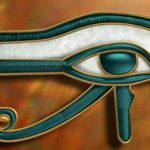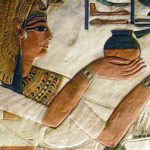Frogs in Ancient Egypt update 2022
Frogs in Ancient Egypt. What did frogs represent in ancient Egypt? We’re going to discover the answer through this blog post in detail from the FTS blog.
The Frogs in Ancient Egypt was fertility, water, and rejuvenation emblem in ancient Egypt. Heket, the water goddess, appeared frequently as a woman with a frog’s head. Frogs, as well as toads, were also regarded as rain souls and then were found in various rites to bring the rains.
Frogs are classified as ‘salamanders.’ These chilly animals spend the winter in the winter and undergo various transformations throughout their life span.
Interbreeding, laying eggs, developing into tadpoles in eggs, and finally as youthful frogs without feathers are all part of the process. That’s why frogs were associated with created myths and legends in ancient Egypt.
Frogs in Ancient Egypt
What does a frog represent soul?
The birthrate, potential, conversion, purity, wealth, and best of luck are all symbols and meanings associated with frogs. Frogs have existed on Earth for as long as people have.
What do frogs represent?
Frogs represent a variety of positive and negative symbols, but overall, they represent transition, start changing, cleansing through water, procreation, and wealth. Maintain a frog trinket with you at all times to avoid missing out on this spirit animal’s impact of peace, everlasting beauty within, and sincerity..
Look here; Eye of Horus update 2022
Why is there a frog plague?
The 2nd plague brought down on Egypt by Aaron’s “rod” was that of frogs. In their attempt to emulate the power of the Nile, Pharaoh’s illusionists were sufficient to convey more frogs.
Is having a frog in your home unlucky?
Some societies believe that a frog entering your home brings great luck, while others genuinely think it helps to bring bad luck. The Xhosa tribal group believes that a frog in your home may be having to carry an incantation or a blight. In either case, assassinating a frog is generally regarded as a terrible idea.
Is it a sin to tie the knot with someone who is not a Catholic?
From the beginning, the Catholic Church has objected to weddings between such a Catholic as well as any non-Catholic, baptized or not, seeing this as “demeaning the holy personality of married life, implicating as it did a sacrament in sacred objects with outside the flap.”
Frog Life Cycle in Ancient Egypt
The Nile’s marshes were recognized to be teeming with frogs. The Nile’s inundation was a significant stage for agriculture because it supplied water to many faraway fields.
In the rough waters left behind because of receding ripples, frogs would sprout. As a result, they began to be regarded as icons of abundant supply.
They became an emblem for the number “hefnu,” which meant “100,000” or “a huge number.”
A frog’s life cycle began with coitus. A couple of individual frogs will indeed plexus whereas the female laid her eggs.
Look here; Ancient Egyptian History
Why was it wrong to make contact with an Egyptian frog?
While researching Egyptian toads/frogs, it was discovered that some of the lifeforms have a moderately poisonous exudation, that may have induced some folks to scrape the region where they were impacted. Interaction with the living creatures would be extremely unpleasant. They would be involved at any time of day or night, as well as the toads might have moved away from waterways.
Chaos Forces
The gods hhw, kkw, nnnw, and Imn have been viewed as embodiments of ancient powers of chaos.
The 4 male gods of Hermopolis’ Ogdoad were depicted as frogs, whereas the four female gods were depicted as serpents going for a swim in the mud as well as slime of chaos.
Rebirth Symbols
The ancient Egyptians was using the frog sign to list the names of the deceased.
The phrase used to express well-wishes was “live again.” Because a frog was a signifier of reincarnation, it played a part in the revival.
Frogs were affiliated with reincarnation because, throughout their hibernate mode time frame in the winter, they will indeed cease all activity and keep hiding among stones.
They stayed motionless in pools or on banks of the river until the arrival of early summer. These snoozing frogs wouldn’t even need food to live. It appeared as if they were dead.
When warmer weather showed up, these frogs will indeed climb out of the mud as well as slime and resume their healthy lifestyle.
Look here; Ancient Egyptian Cities 2022
Coptic Rebirth Symbols
As Word spread in the 4th century Ad, the frog came to be considered as a Coptic emblem of rebirth.
Lights found in Egypt have frogs drawn on the top surface.
A few of these lights bear the inscription “I am the reformation.” The lightbulb represents the sun rising, as well as the frog on it, represents the Ptah, who’s famous in Egyptian mythology for his living.
Khnum
Khnum was among the first Egyptian gods. He seemed to have the face of a frog and horns, however the body of a human. He was initially the god of the Nile’s source.
The yearly flooding of the Nile brought silt, clay, and water into the land areas.
As a result, Khnum was thought to be the creator of human dead children.
These clay human children have been created on a potter’s wheel. They have been shaped before being positioned in their mothers’ uteruses.
Khnum is also said to have sculpted other gods too though. He is referred to as the Godly Potter as well as Lord.
Hauhet and Heh
Heh was the god of infinite space, moment, long-life, and immortal, as well as Hauhet was the goddess of infinite space, time, long-life, and immortal. Heh was depicted as a frog, whilst also Hauhet was depicted as a serpent.
People were the initial gods of Ogdoad, & their identities meant ‘endlessness.’
Naunet and Nun
Nun was the epitome of the old waters that existed before Earth was formed.
Kauket and Kek
Kek is an abbreviation for “shadows.” Before the World was made, he was the god of the shadows of chaos.








